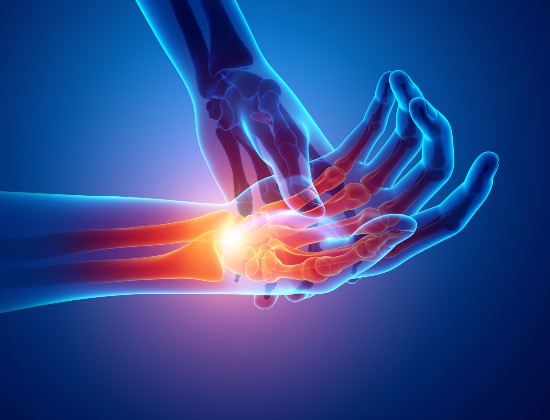Flexor tendon injury
Tendons connect muscles to bone, pulling on them to move when your muscles contract. When you move your fingers, flexor tendons pass through tendon sheaths (tunnel like structures) which keep them in place. Flexor tendon injuries, which can cause problems with bending your fingers or thumb, are usually a result of having a deep cut on your wrist, hand, or fingers (on the palm side). This is because the tendons are close to the skin’s surface, making them easy to damage. The tendons can be ruptured or pulled from the bone in sporting injuries or spontaneously if the tendons have been weakened.
Causes
As well as cuts, sports injuries can also cause flexor tendon injuries. These are most common in football, rugby and wresting. ‘Jersey finger’ is used to describe an injury to a finger when a player grabs another’s jersey and the finger becomes caught and pulled. Injuries are also common in sports where there is a lot of stress on the hand and arm, including rock climbing; and some health problems can make injuries more likely because they weaken the flexor tendons, for example rheumatoid arthritis.
Symptoms
Not being able to bend your finger, or pain when you try to bend it, along with tenderness and numbness in the injured area are common symptoms.
Diagnosis
If you have a deep cut to your hand, you should see a doctor as soon as possible. In the meantime, wrap the cut firmly in a clean bandage, apply ice (crushed and wrapped in a towel) and elevate your hand (raise it above the level of your heart). The specialist will examine your fingers, checking for normal movement and feeling. You may also need an X-ray to check if your bones have been damaged.
Treatment
Non-operative treatment: if the tendon is only partly torn, you may be able to have a splint and follow an exercise programme to gradually restore strength and movement.
Surgery: if the tendon is completely torn, it will need to be repaired during surgery which is usually an outpatient procedure. Afterwards you will have a splint to protect your hand in a bent position, allowing the tendon to heal correctly. It can take at least eight weeks before you can start to return to your normal activities.
Important: This information is only a guideline to help you understand your treatment and what to expect. Everyone is different and your rehabilitation may be quicker or slower than other people’s. Please contact us for advice if you’re worried about any aspect of your health or recovery.


